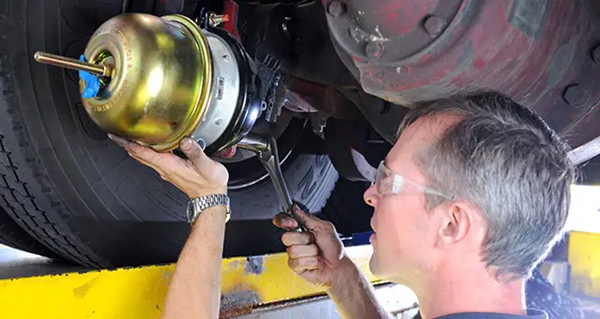The Role Of Air Brake Components In Fleet Efficiency And Safety

Strong 8k brings an ultra-HD IPTV experience to your living room and your pocket.
Efficiency and safety are crucial in the field of heavy-duty transportation. A key system responsible for both is the air brake system, which is standard in most commercial trucks and trailers. Air brakes, as opposed to the hydraulic systems used in passenger cars, are made especially to withstand the demands of big, heavy fleets. Reliable truck brakes are essential for maintaining control under heavy loads and ensuring every stop is both smooth and secure. Understanding the role of each component within this system can help fleet operators maintain safety standards, reduce downtime, and increase operational efficiency.
Understanding The Air Brake System
An air brake system is composed of several interconnected parts that work together to stop a vehicle safely and reliably. These include the air compressor, air reservoirs, brake chambers, valves, and slack adjusters. In order to produce, store, and apply compressed air—the braking force required for large loads—each component has a distinct function.
At the heart of the system is the air compressor, which builds and maintains air pressure in the system. This pressure is stored in the air tanks (reservoirs) and is delivered to brake chambers when the brake pedal is pressed. The chambers then convert this air pressure into mechanical force that applies the brakes.
Safety First: Why Air Brake Components Matter?
A properly functioning air brake system is critical for preventing accidents, especially under high-stress conditions like steep declines or emergency stops. Faulty or worn components—such as leaking valves or cracked hoses—can reduce braking effectiveness or even lead to total brake failure. This is not just a hazard for the driver but for everyone on the road.
Routine inspection and replacement of air brake parts are essential. Key components like spring brake chambers, relay valves, and pressure protection valves must be in top condition to ensure that the system engages and releases as intended. If a single part fails, it could compromise the entire system’s integrity.
Enhancing Fleet Efficiency
When it comes to fleet management, efficiency is an essential component, even if safety is typically the most important concern. The downtime that one experiences as a result of brake failures or unexpected maintenance can result in thousands of dollars in lost business, as well as delays and repairs. There is a huge potential for fleet performance to be significantly improved by ensuring that air brake components are constantly maintained or upgraded.
As an illustration, automatic slack adjusters are now considered to be a characteristic component of modern systems. Adjusters like this help to ensure that the correct distance is maintained between the brake drum and the lining, which is essential for maintaining a consistent amount of braking force. When adjustments are made correctly, they ensure that there is little wear and tear, reduce drag, and eventually enhance fuel economy, which is a benefit that is frequently ignored in fleet efficiency.
Choosing The Right Components
Not all air brake parts are created equal. Quality matters—especially in parts exposed to high pressure and varying environmental conditions. Substandard or incompatible components may wear out faster, leak, or fail to meet safety regulations. Investing in durable, OEM-grade parts ensures longevity and fewer replacement cycles.
Fleet managers should also consider compatibility when selecting parts. Mismatched components can cause uneven braking, which not only affects handling but also accelerates the wear of the entire system. Ensuring that all parts—from air dryers to quick-release valves—are designed to work together will provide optimal system performance.
Maintenance Best Practices
Maintaining air brake systems at their best requires a proactive maintenance schedule. Here are a few tips for managing air brake components effectively:
Regular Inspections: Check for air leaks, damaged hoses, and worn brake linings.
Air Dryer Maintenance: To keep moisture out of the system, keep the air dryer in good condition.
System Testing: Perform brake balance and pressure tests as part of scheduled servicing.
Record Keeping: Maintain logs of part replacements and inspections for compliance and tracking.
Final Thoughts
Air brake parts are more than simply parts; they are essential to any fleet's productivity and safety while driving. By investing in high-quality components, maintaining them diligently, and understanding how they interact, fleet managers can significantly enhance both operational safety and efficiency. In an industry where every second and every stop counts, there’s no room for compromise.
Note: IndiBlogHub features both user-submitted and editorial content. We do not verify third-party contributions. Read our Disclaimer and Privacy Policyfor details.



